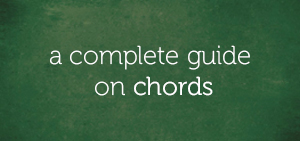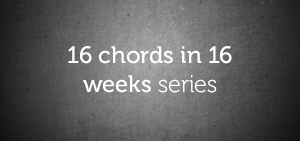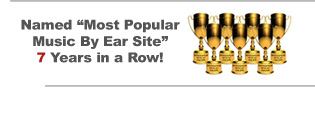Spelling is simply the breakdown of a word into smaller parts known as letters.
In this post, I’ll be challenging your perception by showing you the importance of spelling in music.
“Are You Mail or Female?”
The question above can only appear distorted because you are reading it.
If this question was instead asked orally or out loud, you probably wouldn’t have perceived the word “mail” there. This is because the words mail and male have the same pronunciation.
The only thing that can help one distinguish between the two is spelling. Check out the spelling of both words:
Mail is spelled as M-A-I-L while male is spelled as M-A-L-E.
Several examples of words that sound alike but are spelled differently can be found in the English language. These words are called homonyms.
“What Does Spelling Have To Do With Music?”
Spelling is very important in music because it helps us breakdown ideas into smaller and recognizable parts.
Scales, intervals, chords, and chord progressions can be spelled. This spelling gives us an idea of the notes they are made up of. Here’s how it works…
Scale Spelling
A scale is a succession of notes in ascending or descending order (basic definition).
Here’s the C major scale:
…which is arguably the first scale most beginners are exposed to.
In a beginners’ class where the teacher might want to guide all students to play the C major scale correctly, spelling the scale as C, D, E, F, G, A, and B (letter for letter) becomes important.
Interval Spelling
An interval is the relationship between two notes, based on the distance between them.
Here’s a major third interval in the key of C major:
This interval is spelled C-E.
Take note that intervals can be inverted. When the major third is inverted, this will produce the minor sixth interval in the key of E major:
…spelled as E-C.
Chord Spelling
A chord is a collection of related notes (aka – “pitches”), which may sound pleasant or not.
Here’s the classic C major triad:
…spelled as C-E-G.
Just like intervals, chords can be inverted. The inversion of the C major triad will produce E-G-C:
…which is known as the first inversion.
Chord Progression Spelling
The movement of chords from one degree of the scale to another is known as chord progressions.
Below is a chord progression from the first to the fourth degree of the major scale in the key of C major:
Chord 1 – C major:
Chord 4 – F major:
Chord progressions are also spelled but spelling here is built on a number system. The numbers one to seven are used to represent every degree of the major scale.
I said that to say that this progression is spelled as 1-4.
Therefore, it wouldn’t be wrong for us to label the chord progression from chord 1 to chord 4 in the key of C major as a “1-4 chord progression.”
“Why Should I Bother With Spelling When I Can Play It?”
Remember the “Are you mail or female” question? There is nothing wrong with this question if asked verbally.
But think about the dissonance between mail and female, and how quickly your mind takes you to the right thing – male. Read these questions out loud…
“Are you mail or female?”
“Are you male or female?”
Out loud, even though both questions sound identical, that doesn’t mean we’ll forsake the need to spell it correctly.
Spelling male as mail happens a lot in music and this is because music, just like any other language, has homonyms. In practical playing, the intervals C-D# and C-Eb sound alike.
C-D#:
C-Eb:
However, it is important to know that in the same way mail can’t take the place of malein the question “Are you male or female?”, it is also impossible for the interval C-D# to take the place of C-Eb in music.
I know they sound alike, but they have their characteristic differences. Here are two notable ones:
Compass: C-D# is a second while C-Eb is a third. In terms of size (aka – “compass”), C-Eb is wider than C-D# and this is because the width of an interval depends on the number of letter names it spans, and not the way it appears on the keyboard. C-D# spans two letter names, C and D, while C-Eb spans three letter names, C, D, and E.
Relationship: The relationship between two notes can sound pleasant or unpleasant, stable or unstable, consonant or dissonant. The relationship D# has with C is different than the relationship between Eb and C. C and D#, when played together, will produce an augmented second, which for all intents and purposes, is a harsh interval (aka – “dissonant interval”) as opposed to C and Eb, which is a minor third interval and thus, pleasant.
Check out this C minor triad:
To be candid, there’s nothing wrong with playing this C minor triad. However, spelling it will produce the greatest distortion you can think of.
C minor triad is traditionally built off thirds (intervals that encompass three letters) and played with the notes C, Eb, and G:
Spelling it as C-D#-G will produce the same distortion as the question “Are you mail or female?” produced (if not more).
Welcome to Our Spelling Guidelines Series
We have emphasized the importance of spelling over the years. The most recent being:
However, you’ll do well to also check out the following posts:
- Do you spell “their” as “there?”
- Here’s a Foolproof Guide That’ll Have You Naming Chords Correctly…TONIGHT!
- Are You Naming Your Scales Correctly?
To further previous efforts we’ve made in the past around this topic, we will be releasing a brand new free series titled “Spelling Guidelines Series.”
This series is packaged to take you a notch higher in this year of leapfrog growth by equipping you with what it takes to live beyond spelling errors in music.
We’re dedicating all the Wednesdays in February 2016 to this spelling guideline series. Mark the following dates in your calendar:
February 10 – Guidelines to Spelling Scales Properly
February 17 – Mastering Enharmonic Intervals
February 24 – “Every Good Boy Deserves Favor Always”
In addition to what you’ll learn this month, we’ll be offering you our brand new Quick Reference Guide on Spelling Scales, Intervals and Chords at the end.
Who Should Follow This Series?
There are so many things in classical music theory that many ear musicians are not exposed to.
This is because musicians who play by ear are not exposed to writing (aka – “notation”). Instead, the ear is the final judge.
If this sentence “Are you mail or female?” is left for the ear to judge, it will sound perfectly fine. It will still sound like “Are you male or female?”.
If you are constantly making musicical grammar mistakes equivalent to “Are you a mail or female?” simply because it sounds like “Are you male or female?”… if you easily mistake C-D# as a minor third interval simply because it sounds like C-Eb… if you find nothing wrong with Ab-B-Eb as a minor chord simply because it sounds like Ab-Cb-Eb… this “Spelling Guideline Series” is for you!
Until then.
Chuku Onyemachi
Latest posts by Chuku Onyemachi (see all)
- The Formation Of Diminished Seventh Chords Used To Be Challenging Until I Did This
- How To Form Seventh Chords In Two Shakes Of A Dog’s Tail Using Third Intervals And The Circle Of Fifths Chart
- I Played The 13sus4 Chord And This Happened…
- How To Build Seventh Chords Like An Architect Using “Foundation And Structure” Concept
- This 4-Week Plan Will Help You Master All The Major Scales







Comments on this entry are closed.